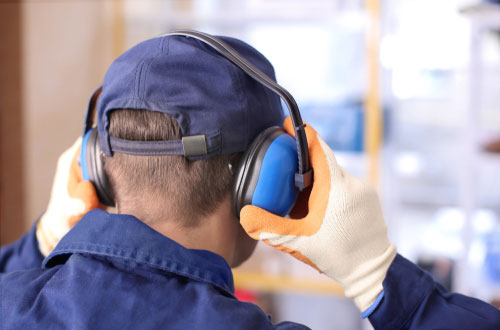Written by Occupli Consultant Aisling Hegarty
Exposure to high levels of noise, either continuously or suddenly, such as loud bang from equipment, can have a number of physiological and psychological effects on workers including stress, tinnitus. Permanent loss of hearing can occur if workers are exposed to high noise levels over long periods of time. It is imperative employers ensure Occupational Noise Assessments are being conducted
What does the legislation cover on noise in the workplace?
Under Chapter 1 Part 5 (Control of Noise at Work) of the General Application Regulations 2007, it sets out the obligations of employers to protect employees from excessive noise levels. The regulation specifies two noise Action Levels and they are as follows:
- Lower Action Level 80 dB(A) LEX,8h and 135 dB(C) Lpeak
- Upper Action Level 85 dB(A) LEX,8h and 137 dB(C) Lpeak
The regulations also introduce an “Exposure Limit Value” as follows:
- Exposure Limit Values 87 dB(A) LEX,8 and 140 dB(C) Lpeak
When employees are likely to be exposed to noise at work above the lower exposure action value, an employer is obliged to carry out a detailed Noise Risk Assessment, completed by a competent person.
What is involved in a noise risk assessment?
A Noise Risk Assessment will identify and assess the risks poised by noise in your workplace and environment in accordance with all current Irish noise legislation and current best practice. Below are typical steps to be carried out for a noise risk assessment within a factory setting:
- Ensure to obtain the appropriate competency and knowledge for carrying out the noise risk assessment. Ensure to source competent advice from persons when making a decision on control measures.
- Ensure the assessment considers the Action & Limit Values under the General Application Regulations 2007 Chapter 1 — Control of Noise at Work. Under the regulations it states “..when applying the exposure limit values referred to in paragraph (1)(a) in determining an employee’s effective exposure, shall take account of the attenuation provided by individual hearing protectors worn by the employee..”. This shall also be considered in the assessment.
- Identify the sources of noise in the factory. The assessment shall be carried out in areas where the noise level is potentially above 80 dBA.
- Obtain measurements using a Sound Level Meter (SLM). Ensure the sound meter is a Class 1 (precision meter). A personal noise dosimeters can also be used for assessing noise exposure.
- The meter shall be calibrated before and after the measurements are taken. The measurement parameters used during the noise risk assessment shall be:
- “A-weighted” – equivalent continuous sound level (LAeq)
- “C-weighted” – peak sound pressure (Lcpeak) level.
- ‘Dose’ is due to noise intensity & duration and is measured using LEX,8h.
- Working patterns and activities of personnel shall be taken into consideration during the assessment.
- A record of results shall be tabulated and will include:
- Location/area of measurement
- Measured noise level (dB) – LAeq and Lcpeak
- Maximum Exposure Time to Reach Action Levels – LEX,8h.
- Where action levels and limit values are being breached, applying the Hierarchy of Controls (HOC) should be considered to reduce the exposure.
- According to the HOC, examples of controls measures include:
- Elimination – if possible eliminate the noise completely.
- Engineering controls – use of sound dampening systems or materials to reduce the noise. Set up a “buy quiet” approach (i.e. lower noise equipment) when purchasing new or upgraded plant machinery (OHTA, 2009).
- Administrative Controls – Use of signage Warning Signage.
- PPE – Use of hearing protection such as ear defenders and ear plugs.
- Ensure to review the assessment on an annual basis.

It also important to note where any changes, for example, changes to employees, shift patterns, hours of work, machinery used or other operational issues, you will need to redo your Noise Risk Assessments. Overall, the employer must establish and implement a programme of technical and organisational measures to reduce exposure.
Occupli Consultancy provides independent professional and practical advice on your duties under these regulations. Our Occupational and Environmental Noise Assessment services include:
- Comprehensive noise surveys (occupational and environmental monitoring)
- Comprehensive noise report with key recommendations
- Noise consultancy to ensure legislative compliance
- Noise awareness training
For more information on Noise Assessments, please click here or contact the Occupli Consultancy Team via info@occupli.com

